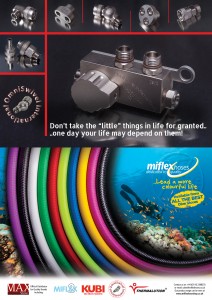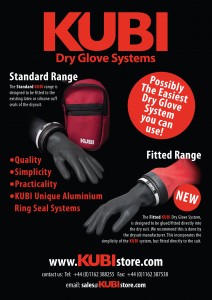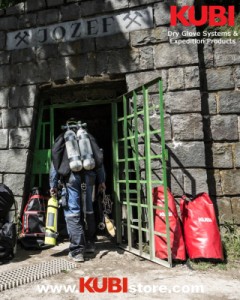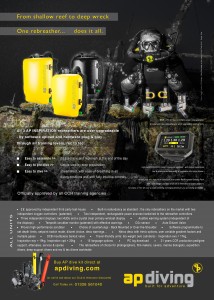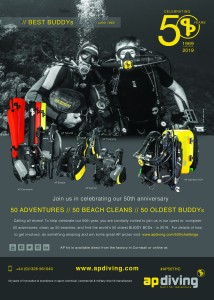DICTIONARY OF EGYPTIAN SHIPWRECKS-D
DICTIONARY OF EGYPTIAN SHIPWRECKS- D
WRECK OF THE S.S DACCA
|
THE FINAL VOYAGE
After an eight year service under the command of Mr Dugard Stewart (master, RNR), and Chief officer James Tait (RNR), she left London on the 29th April, bound for Queensland, Australia. She had a crew of 91 all told including the master, 5 officers and 5 engineers with 464 passengers . She left Gravesend on the 30th After a stop at Naples, she had safely navigated her way in to the Egyptian Red Sea via and the Suez Canal, leaving Suez at 0020 on the 15th May, 13 hrs later she entered the red sea proper, making steady progress south in the good conditions, passing close to Shadwan Island, marking the end of the narrow Gulf of Suez, opening into the much wider Red Sea. and by 2200 she was approaching the Brother islands – which was used to get an accurate position fix. Her new course “S34E by standard compass”south should have taken her well clear of Deadalus Shoal, the captain expecting currents to push the ship westwards and clear of the shoal. However in the early hours of the next morning as dawn broke the Daealus light was spotted dead ahead. The reef shelf extends almost half a mile north of the lighthouse and with no wind or swell the surf line would be none existent. The first action to steer away from the reef was in effective and by the time action was taken to steer the ship clear, the Dacca ran aground at full speed onto the reef to the west of the lighthouse. The glancing blow caused a break in the hull and the vessel began to take on water. The captain manoeuvred the vessel until her bow once again was over the reef. Using the lifeboats, the assistance of a passing ship, the ROSARIO and with some jumping directly onto the reef all of the passengers and crew were saved along with most of their possessions.5 hours after she struck the reef the Dacca was seen to” go down in very deep water”. The passengers were transferred to the PALAMCOTTA , owned by the same company, while the crew stayed on board the ROSARIO and taken to Port Said.
At the court of enquiry on the 3rd July 1890 Judge Marsham declared
“the chief officer is alone in default and the court suspends his certificate of compancy as master for 12 months”
THE WRECK TODAY
On the northern tip of Daedalus at around 40 mtrs the remains of the wreck tumble down into 60 trs ,fused and well dispersed into the reef wall. The wreckage is quite substantial, with large sections of plating and pipework. More wreckage exists deeper down the reef, the existence of which lead to some confusion as to the location of the next wreck. The currents here can be very strong as they split
M.V.DALIA “S”
The M/V Dalia “S” was a diesel powered cargo ship of 180 tons of Syrian registry which was carrying a cargo of 320 tons of nitric acid (3 containers of 20 tons each and 100 containers of 2.6 tons each) from Tartous to Alexandria. On 16 May 2000 an S.O.S. was received by the Egyptian Coast Guard indicating that the ship was taking on water 7 miles off Alexandria due to some of the containers having leaked nitric acid and the hull of the ship had been corroded away. The M/V MariDive 85 was dispatched to the ship’s location. Upon arrival the ship was reported to be listing approximately 35-degrees to port. The crew of the ship were rescued and medical treatment was provided by the Maridive 85. The ship sank a few hours afterwards at position 31.27N/30.10E in approximately 15-18 meters of water, which had a large environmental impact on the local fishing industry over the following 6-months. The MariDive Offshore Projects company was contracted to remove the remaining containers of nitric acid under the supervision of the Egyptian Environmental Affairs Agency. Recovery of all remaining containers of nitric acid was conducted from 08 June 2000 and completed on 02 July 2000
H.M.S. DEFENDER
HMS Defender was a D-class destroyer built for the Royal Navy in the early 1930s built at Barrow In Furness by Vickers Armstrongs in 1932. She was 1375 ton, 326 ft long fitted with turbine engines and 3 drum boilers, delivering some 36000shp giving her a speed of 35 knots. Her armament included four 4.7inch guns, 7 smaller and 8 T.T. guns.
The ship was initially assigned to the Mediterranean Fleet before she was transferred to the China Station in early 1935. She was temporarily deployed in the Red Sea during late 1935 during the Abyssinia Crisis, before returning to her assigned station where she remained until mid-1939. Defender was transferred back to the Mediterranean Fleet just before World War II began in September 1939. She briefly was assigned to West Africa for convoy escort duties in 1940 before returning to the Mediterranean. The ship participated in the Battles of Calabria, Cape Spartivento, and Cape Matapan over the next year without damage. Defender assisted in the evacuations from Greece and Crete.
On 7 January 1941, Defender escorted Convoy MW.5 with her sister Diamond and the anti-aircraft cruiser Calcutta from Alexandria to Malta during Operation Excess. The ship was refitted in Malta from 4 February to 19 March and participated in the Battle of Cape Matapan on 27–29 March. During Operation Demon, the evacuation of Allied troops from Greece, she escorted Convoy GA15 on 29–30 April from Souda Bay, Crete, to Alexandria. An Italian destroyer and two torpedo boats attacked the convoy at night as it was transiting Kaso Strait east of Crete, but were rebuffed by the defenders without inflicting any damage. The following month Defender assisted in the evacuation of troops from Crete to Egypt after the Germans invaded on 22 May (Operation Merkur).
On 10 June, Defender, and the other three ships of the 10th Destroyer Flotilla, arrived off the Lebanese coast to reinforce Royal Navy forces supporting Operation Exporter, the invasion of Vichy French-controlled Syria and Lebanon, but the ship was not engaged during her time off Lebanon and Syria. Later that month, she began escorting convoys to and from Tobruk and on 29 June the Australian destroyer Waterhen was badly damaged by Italian Junkers Ju 87 “Stuka” dive bombers off Tobruk. Defender took Waterhen in tow, but the next day she capsized and sank.
On 11 July 1941, Defender was returning from Tobruk in company with the Australian destroyer Vendetta.They were attacked by a single Junkers Ju 88 bomber of I./Lehrgeschwader 1 piloted by Gerhard Stamp on a reconnaissance flight along the coast before dawn. The bomber scored a near-miss on Defender which detonated under the ship, just forward of the engine room. The shock broke the ship’s back and flooded the engine room, although there were no casualties among her crew or passengers. Vendetta took Defender in tow, leaving a skeleton crew aboard the damaged ship, but she started to break up and Vendetta was forced to scuttle her with a torpedo and gunfire off Sidi Barrani about five hours later.
M.V. DELPHINULA
The Delphinula was a tanker of 8,120 grt, 465 feet in length, and 59.2 feet in beam built in 1929 by Lithgows (Yard No. 919), Port Glasgow, Scotland and owned by the Anglo-Saxon Petroleum Company. Propulsion was a single diesel with a cruising speed of 12-knots.
On 18 May, 1943 the ship ran aground 3.7 cables bearing 231-degrees (true) from the Great Pass Beacon in 9-13 meters of water off of Alexandria, Egypt while in transit to Port Said. While grounded during several days of stormy weather, a fire broke out onboard due to fuel vapours igniting either from the ship itself, or from one of the tugboats that were assisting in salvage. Two tugs that were assiting in salvage of the vessel were reported on fire as well. The ship was abandoned and the resulting explosion resulted in the vessel being holed, twisted, and distorted. The fire was extinguished on 20 June 1943. On 21 July, 1943 the vessel broke in two and was considered a total constructive loss
DOMIAT ex HMS NITH
| HMS NITH- SPECIFICATION | Frigate | |
| Displacement | 1370 BRT | |
| Length | 301 feet | |
| Complement | 140 men | |
| Armament | Original design; 2 x 4inch guns (2×1) 10 x 20m guns (2×2,6×1) | |
| Max speed | 20 knots | |
| Engines |
2 shaft Reciprocating (4 cyl. V.T.E.) HMS Cam, HMS Chelmer, HMS Ettrick, HMS Helmsdale and HMS Tweed 2 shaft Geared Turbines |
|
| Power |
I.H.P. 5.500 HMS Cam, HMS Chelmer, HMS Ettrick, HMS Helmsdale and HMS Tweed S.H.P. 6.500 |
|
|
Commonwealth frigates were specifically designed as anti-submarine escorts for trans-Atlantic convoys. River class frigates offered the size, speed, and endurance of escort sloops using inexpensive reciprocating machinery of corvettes. River class were designed for North Atlantic weather conditions and included the most effective anti-submarine sensors and weapons. HMS Rother and HMS Spey were launched in late 1941, and Canadian and Australian construction continued through 1944. Early River class units were available for the turning point convoy battles of the winter of 1942-43. River class frigates generally replaced the old Town and V&W class destroyers which had been assigned to ocean escort groups. Ten River class frigates were built for the United States in Canada. Two were commissioned in 1942 as USS Asheville (PF-1) and USS Natchez (PF-2), they were armed with U.S.N. pattern 3″/50 AA guns. The other eight were released under lend-lease for use by Commonwealth forces.
|
||
This class was developed to have the same capabilities as the pre WW11 “Black Swan” class. However, they were much simpler, cheaper and easier to build with “Reciprocating” rather than “Steam Turbine” power plants. They were designed to be 50ft. longer, at 300ft., than the contemporary “Castle Class”, and so the task of building them could not be carried out in many smaller “Civilian” yards.
HISTORY
It was 25 September before she was launched, named H.M.S.Nith, and commissioned into service. Her duties should have been convoy escort, because her armament consisted of 2 Quick Firing 4” guns, one rocket multi launcher, known as a Hedgehog and 126 Depth charges. It was found that she was not suitable for escort duties, and in September 1943, following unsuitable speed trials, she was designated to be a landing craft support ship. In June 1944, she was chosen to be the Headquarters for the British landings in Normandy on ‘D’ Day, and after landing 231 Infantry Brigade on ‘Jig’ Green Beach, she commenced duties in controlling the routing of convoys to the
assault force zones. She was especially suited for this, because prior to joining the ship, many signalmen and W.T.operators had received special training in Scotland for their chosen duties, and when the time arrived they could receive and transmit multiple signals, both visual and wireless. In their duties re-routing convoys, Nith should be easily recognised, so her funnel and bridgeworks were painted a vivid red so it was impossible to miss her.
It is more than likely that she was singled out for enemy attack, and on the evening of 24 June 1944, Ordinary Seaman Les Gentry was manning a radio direction finder to locate aircraft, but the set was giving trouble so he was given permission to ask a radar mechanic to look at it. A very fortunate incident for him, whose action station was on the starboard side. He soon had the set working, and immediately Les Gentry had a bearing dead astern, of an aircraft at 1300 with the range closing. His last signal to the bridge was ‘Target Overhead Sir,’ when Nith was struck on the starboard side by a Mistel. This was one of the latest of the enemies weapons, and was a JU88 plane, packed with high explosive, but guided by a parent plane to its target. A terrible toll was taken of the crew, the Wounded were transferred to another ship and the dead busied at sea at 0700 hours 25 June 2003, whilst Nith was under tow to Cowes, where she was dry-docked and underwent repairs.
This was one of two experimental Mistel that the enemy tried out. The other one crashed on take-off at St Dizier, with the loss of two pilots. In October of that year, Nith was sailed to the Clyde and prepared for duties in the Far East, but it was the following April before she was ready, and sailed for Arakan, via Gibraltar and the Suez Canal, to take part in Operation Dracula, to re-take Rangoon. Fortunately, the Japanese Army had already evacuated and after the re-occupation was complete, Nithwas again chosen to be the Headquarters of the Senior Naval Officer in Charge. The following year, she was part of Operation Bibber, which was the re-occupation of Thailand, but the Japanese had already surrendered, so it was a bloodless coup. The following year March 1946, she left India and became part of the Reserve Fleet at Harwich.
She has been immortalised in a book by Robert Forsyth
THE SINKING OF THE DOMIAT
There are conflicting reports as to the actions taken in the sinking of the Domiat two are recorded here.
Eyewitness account from HMS Newfoundland
“We cracked off up the Red Sea at twenty knots and the next morning were bidden shift into Action Working Dress. This flummoxed some of the officers who had long since stopped bothering to cart that sort of kit – denim trousers, flash-proof shirts – around with them. It might have been “Anyone for tennis?” for some of them rather than “Hands to Action Stations”. Scratch (the Captain’s Secretary) even turned out in a silk shirt. We were then issued with lifebelts, and lights for the same, and First Field Dressings to be carried in our respirator haversacks. Even the dimmest began to think Something might be Up.
Keeping loose station on us was the Daring-class heavy destroyer Diana. We rigged and adjusted our lighting at night so as to look as far as possible like two merchant ships.
By now we were under the command of C-in-C Mediterranean (Admiral Sir Guy Grantham) whose instructions (which reached us via Vancouver – no satellite comms in those days) were interpreted as orders to seek out and destroy the Egyptian Navy. Communications were a continuing problem and a rendezvous signal to bring our tanker, RFA Wave Sovereign further north never reached her.
A midnight 30th/31st the balloon went up and we cracked on to full speed. On the Wednesday 31st we went to cruising stations, with anti-aircraft readiness (4″ and Bofors manned) by day and surface readiness (6″, and one 4″ per side for starshell) by night, on a three-watch system, assuming we should have the time to go to full Action Stations if required. That afternoon Newfoundland had to fuel Diana, with consequences for Newfy later.
All our radars started to show signs of strain. At least one would usually go off the board when the 6″ were fired and fires in the sets were not infrequent. That’s just the way radar, with its rather warm thermionic valves (valves, Grandpa?) was in those days. We also used to get odd anomalous propagation effects (anaprop), whereby echoes from very distant objects would return after the pulse had been repeated. The result was that a target at, say 200 miles, would paint as if at 100 or closer. In this way we even at one point “saw” our Mediterranean Fleet doing its rather more publicised thing off Port Said.
For all of this period I stood my watch in the Air Direction Room (ADR) and had a pretty good idea of what was going on, even if I could not see out.
It was Hallowe’en. At dusk on 31st we went formally to Action Stations. In the ADR I could hear the war-cries over various broadcasts.
“Six-inch closed up, cleared away”
“Four-inch closed up, cleared away” and so forth.
“This is PCO [Principal Control Officer]. Policy SURFACE. Provide HE fuzed DA [Direct Action]. Lookout bearings standard. GDR [Gun Direction Room] directing. All positions STAND TO!” We were then stood down to “Action Stations Relaxed” and a proportion were allowed to curl up and caulk where they could. The other ADR Mid. sloped off to the Radar Display Room, an annexe of the ADR, and settled down for a night’s sleep in a quiet corner.
For some while we just roared along with nothing happening. Then on the Armament Broadcast “LOAD THE HOISTS!”
We had been tipped off that an Egyptian warship was thought to be laying mines in the area and then that one was bullying neutral merchantmen. Captain Hamilton, who obviously knew much more than he could let on, studied the plot. Pointed to a contact. “That one looks fishy”.
Then: “Six-inch Surface, Red 40” “Director Radar” “Six-inch, Broadsides!” “All guns with HE/DA and Full Charge LOAD LOAD LOAD!” Gun Ready lamps come on: “Six-inch Radar” “ENGAGE!” “Fixed sight procedure” (Blimey – this is close) “SHOOT” Ding-ding on the fire gong WOOMFAH!
The whole ship shook as I had never felt her shake before. We were firing on the beam with the guns almost horizontal. Away went a nine-gun, full charge, full-calibre cruiser broadside of 130 pound High Effect shell, smack into the bridge structure of the Egyptian frigate Domiat, about 1400 yards away.
It wasn’t quite as straight forward as that. For a start there had been some hectic ordnance work in the Director where the main sight had been in pieces all the afternoon. Then the Gunnery Officer couldn’t believe he was really being asked to fire at an actual ship and Hamilton had to order him to Open Fire. What someone with an attitude like that was doing in Gunnery goodness knows; Hamilton got rid of him as soon as he could afterwards. At “SHOOT” there was a further hiatus as the Midshipman in the Director couldn’t see the target. He could see a ship, just, but not the large rectangle of canvas he had been carefully drilled to expect. Shouts from the Transmitting Station, far below, of “Pull the ——- trigger” put this right.
Meanwhile the Domiat, illuminated by our 20″ Signal Projector, had acknowledged our signal to ‘Stop or I Fire’ – L in International Code – but was visibly turning towards us. Rather fresh for a G—o. We could see their hands running to man their guns – puny 4″ – so there was some urgency to get one in first. Domiat’s Officer of the Watch later said that she saw us just before we illuminated her and he confirmed that she had turned to ram.
However with the first broadside we settled in and every ten seconds there was the CRASH! of another one, beautiful rhythm. This was the music of my Country’s guns and no sound would ever be so sweet again. As Lord Fisher put it “What we want is Gunnery, Gunnery and more Gunnery!”
As the geometry changed and the bearing drew forward the odd cry – “Y turret will not bear” but the job was being done. Our next broadside smashed into Domiat’s bows and ignited her paintshop so that her bows glowed cherry red in the dark night. Diana, astern, had seen Domiat turn and got in seventeen rounds of 4.5″ from her A and B. As we closed the range the 4″ and Bofors joined in and the Captain of one of the port Bofors later received a DSM for his good work hosing Domiat’s deck down with 40mm. Y turret was able to join in again later.
After five minutes or so, at 0130, and after 51 rounds of 6″ in nine broadsides we checked fire because the Domiat was visibly sinking. She capsized and sank five minutes later. We picked up two Egyptian officers out of the water, and Diana recovered 67 other survivors, but then we decided that hanging about in the area might be silly because of the MTB threat, so asked a nearby South African merchantman – what must they have thought about all the pyrotechnics? to see if they could find any more people in the ocean. She was one of a large number of merchant ships getting out of the Gulf of Suez just as quick as they could.
An alternative account by Harry Gibbon
On the evening of 31 October 1956, with Egypt and Britain being at war during the Suez Canal crisis, the HMS Newfoundland, a British Fiji-class cruiser, was patrolling the Red Sea south of Suez. She encountered a darkened ship passing here in the opposite direction. The Newfoundland closed to 1,500 yards, and came parallel to this ship, signalling it to heave-to or be fired upon. The darkened ship signaled acknowledgement and appeared to slow down. Then it extinguished its running lights and trained her guns on the Newfoundland who then immediatley opened fire. This was at approximately 0130 on 01 November 1956.
The ship, later identified as the Egyptian Navy Frigate Domiat, had just left the port of Adabieh on its way to rendevouz with the Egyptian Frigate Rosetta, began returning fire a moment later.
By all accounts given, the Egyptian sailors on board the ship bravely returned fire, scoring a few hits on the Newfoundland causing some damage and a few injuries with her 4-inch shells. However, the Domiat was no match for the British cruiser and, after her bridge and wheelhouse had been destroyed, among other battle damage, the Domiat soon capsized, and sank after being finished off by the HMS Diana (Daring Class destroyer), under the command of Capt. J. Gowers, when it was thought that the Domiat was trying to ram her.
The Newfoundland and Diana rescued 69 survivors from the wreckage. Egyptian casualties were reported as being 6 officers and 50 sailors. British casualties, 6 sailors.
For the remainder of the day, we exercised ‘Action Stations’ and were issued with anti flash gear. ‘Operation Musketeer’ had commenced.
On the evening of the 31st of October, Eagle, Bulwark and Albion, together with many other warships, arrived in a position some ninety-five miles west of Port Said in an area that was known as operational area ‘Alpha’. The British contingent consisted of, our three carriers plus Ocean and Theseus, four cruisers, 13 destroyers, six frigates and five submarines. Of these, one cruiser, HMS Newfoundland together with a destroyer and two frigates were positioned at the southern end of the Suez Canal,.
That same evening down in the Gulf of Aqaba, HMS Newfoundland was on patrol when a contact was picked up of a possible enemy ship at close range.
Sub Lieutenant John Finlay was on watch on Newfoundland’s bridge at the time and recalls that when the enemy ship was ordered to stop immediately, the order was ignored. Newfoundland was by this time approximately 1800yards away and port side on to the suspect vessel. The searchlight was switched on to reveal the Egyptian Frigate, Domiat, which was the ex RN HMS Nith which had earlier been sold to Egypt.
The crew of Domiat were seen to be running to action stations, so Captain Hamilton of the
Newfoundland ordered his gunners to open fire. The Domiat received several direct hits but at the same time, Domiat returned the fire and the Newfoundland received a hit on what had formerly been the ship’s hangar. One Chinese sailor was killed and five others wounded.
A seaman gunner on Newfoundland scored a further direct hit on the 4.5 gun turret of Domiat with the 40mm gun he was operating. Domiat began to break up and sank within minutes.
SEARCH AND DISCOVERY
In 1999, the Red Sea Wreck Academy began its programme of locating wrecks further north of the area close to the Thistlegorm. Starting with the Ashrafi Islands and moving north up into the Gulf of Suez, several wrecks were located in shallow water; Zietieh, Muhansa, Attiki, Bachus, Elliot, Birchwood and Laura security.
Reaching as far north as Ras Shukier, the crew became accustomed to being out of their comfort zone of the Straits of Gobul and Shukier became the staging post for targets further north.
The Hydrographic department had provided us with a large number of targets-some beyond the scope of our team in team in terms of depth-our mandate was to locate wrecks within the 40 mtr sport limit. Many wrecks were to be located as we travelled further and Further north; Scalaria, Aboudy, Turkia were dived surveyed and identified. Cape Clear, Domiat and several other deeper wrecks were located, but use as equipment test runs and put on the back burner. The Turkia became headline news and started to attract other wreck divers to the area.
One wreck though ,had proved elusive-the SS Shillong- and despite superb intel, precise Documentation, state of the art wreck location equipment , a flat sea bed and big target she has resisted all attempts to locate her.
After 7 expeditions to locate her we concluded she had been abducted by aliens…and decided to suspend the hunt until some new or conflicting evidence came to light.
Shillong would have been the jewel in the crown-a major find in kind depths, with a great story behind her. The Turkia had also provided a good historical bonus, but the Domiat beckoned- a British Corvette sunk by a British Cruiser. We had her location we just needed the right team and the right conditions. We were also aware that other groups wanted to follow us, after a failed attempt to bribe our captain for her location!
So in July 2013 we allocated 3 weeks to survey the wreck- we ended up with a 30 minute period due to poor weather. Locating the wreck was easy, almost too easy for the excited onlookers on board the mothership. If they were anticipating a long search they were mistaken. She rose up from the flat surrounding sea bed onto the screen leaving no doubt as to her location. Some of the guests needed to be convinced I hadn’t found her previously! If only we had had the same luck with the Shillong. With an increasing wind and lifting sea we had to be quick. With no surrounding reef and only a sandy bottom securing the boat would be difficult.The captain was uneasy, mindful of the huge vessels plowing up and down the Suez.
To my shock and amazement Captain Abulla started to kit up- he would buddy me as we tied into the wreck-he was going to plunge 46 mtrs with a rope, single 12ltr and no computer. His prep was to say his prayers on the fantail before descending………Allah El Bar! or is it Insh Allah?
The wreck appears out of the gloom from 30 mtrs lying on her starboard side with her midships at 46 mtrs. She is guarded by huge potato cod like groupers-dozens of them!It was evident that they had never seen divers before-and they were defiant, huge and intimidating they remained transfixed until the very last second then retreated to the nearest vantage point.
I was surprised at the lack of damage- I had expected her superstructure to be missing, given the damage report from the sinking, but even the searchlight tower lay resting on the seabed, located aft of the bridge. Her Funnel too was still in place. Twin props adorned her stern and her guns and her hedgehogs* clearly visible. The initial feeling was that she was intact, and certainly had not been salvaged. Artefacts such as mast head lamps littered the wreck. Sufficient evidence to prove once again we were the first. No doubt others would in time claim the same.
The lack of damage was puzzling perhaps her starboard hull took most of the punishment and is hidden from view. Perhaps the witness reports were coloured for effect. Never the less here she is and the mystery provides us with a challenging return. We will need to return with trimix to investigate the deeper reaches of the wreck
Nets and fishing lines were a hazard but only in some areas of the wreck. The bow is partially buried in the seabed of sand-there seems to be little or no surrounding reef or coral as we expected.
Several areas can be penetrated, but again require planning and the right gear for the job/Her bridge, engine room and quarters beckon. At this depth a serious undertaking.
Not since the discovery of the Rosalie Moller have I felt so elated and excited over a new find. True we have located many interesting and indeed puzzling wrecks but the Domait captures the imagination, and poses many questions about her sinking.
To date time on the wreck has been very limited and it hasn’t been possible to determine just how much current flows over the wreck, but with many more expeditions planned we will piece together a full picture of this superb wreck. Her history demands it.
S.S. DUNRAVEN
In January 1876 she left Liverpool loaded with a cargo of steel and timber bound for Bombay where she was reloaded with spices, cotton and muslin for the return journey.
On 25 April the ship ran aground on Sha’ab Mahmoud, close to Beacon Rock. The crew worked frantically to dislodge her and 14 hours after striking the rock she slid off, unfortunately this motion up set her balance and she capsized.
The second report tells how she held fast on the reef for several days, caught fire, burned for 13 hours and capsized, sliding down the reef to where she lies today. After the incident the Board of Trade held an immediate enquiry and found Captain Care to have been at fault. The board declared him negligent and revoked his Captain’s license, the Master’s Certificate, for a year.
Discovered in 1979, by Howard Rosenstien, the Dunraven was to become a “World about us” special, and as she was salvaged, artefacts such as Hamilton bottles, mugs, plates and even jars of gooseberries and rhubarb were found.
This wreck is often dismissed as having little to offer, however those who take time to inspect her carefully will be rewarded with a glimpse into an example of a shipwreck from a nostalgic period in maritime history, and to the discerning eye and underwater photographer, she will always be a firm favourite.
The upturned hull is covered in soft corals and still stands proud of the seabed, reaching up to within 18 mtrs of the surface, although certain sections are now collapsing in.
It is possible to enter the wreck at the stern after viewing her distinctive and colourful prop and rudder, groupers and several batfish often hang out here.
Once inside, the huge cathedral like hull allows exploration forward toward a crack in the hull, which allows extra light to penetrate the interior.
Recently a large section of the hull has broken away and indeed the whole hull is in danger of collapse, her decay accelerated by the extra oxygen trapped in the higher reaches of the upturned hull by divers using nitrox.
A victim of her own popularity, large sections of the hull are now sliding down onto the seabed and her ballast stones litter the floor. It is possible to swim through the boiler and engine room area, restricted to single file, where her workings are easily identified, fly wheel, gearings, drive shaft and big ends and two huge boilers. Forward of this, a large shoal of glass fish hover above.
Her masts and crows’ nest lie on the seabed off her starboard side, making an ideal foreground subject for wide angled shots of the wreck.
The bow section complete with anchor chains is adorned in soft corals both inside and out and is very photogenic.
Batfish, scorpion fish and crocodile fish reside here.
The hull exterior is covered in hard corals and the wreck lies at a slight angle away from the reef, not at right angles as portrayed in some guides.
It is possible to dive the wreck in one go and it is best to start the tourat the stern, swimming through
The hull to the bow, back up over the keel ending up on the sloping reef behind, allowing for a slow curved profile back to the surface. Moderate currents often prevail over the wreck so good boat cover and safety sausages are advisable.
All things considered this is an easy dive to execute. Indeed it is one of the most sheltered wrecks in the area and was always the start of our wreck safaris running out of Sharm. A sandy flat seabed, a good nitrox mix (say EANX32) can safely be used-a shovel would be required to exceed the MOD.
The usual care should be taken with boating traffic overhead. Best to terminate the dive in the bay near the beacon if gas supplies allow!
FURTHER DETAILS CAN BE DOWNLOADED FROM
www.KUBIstore.com & www.Miflexhoseshop.co.uk
